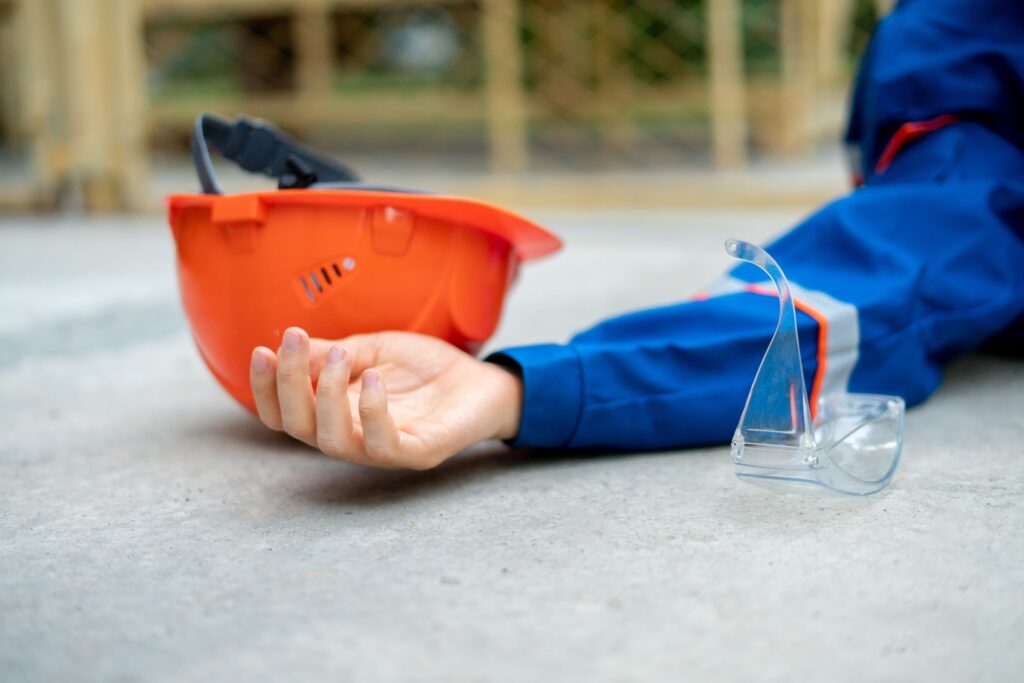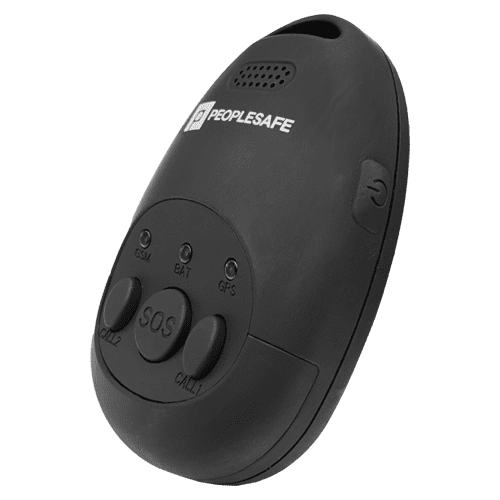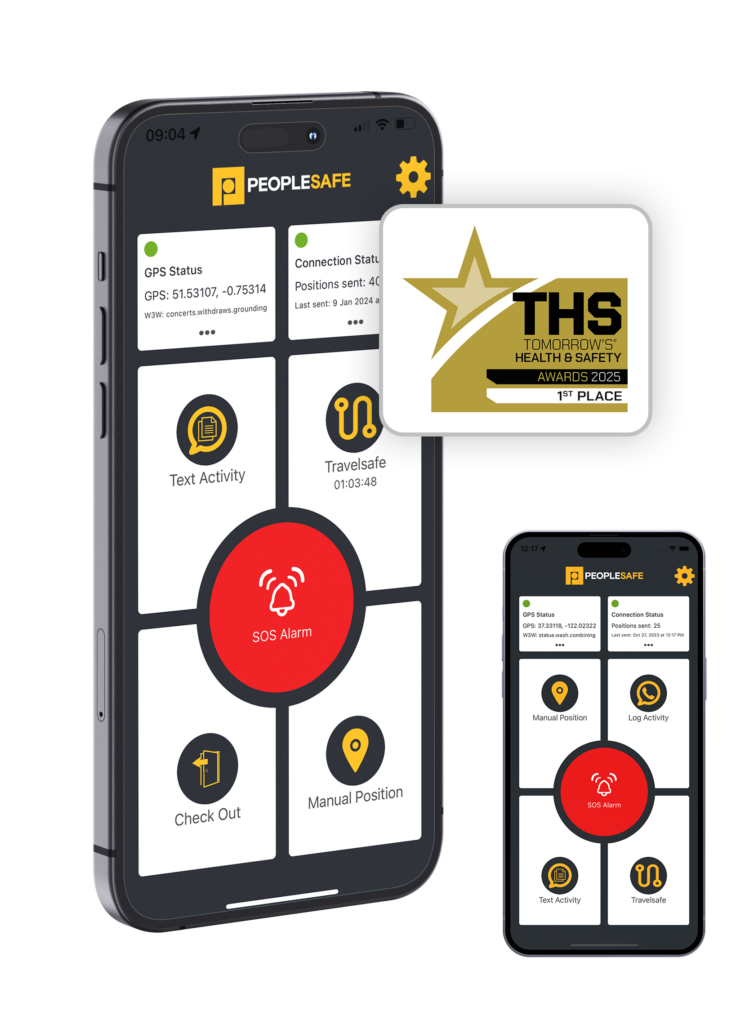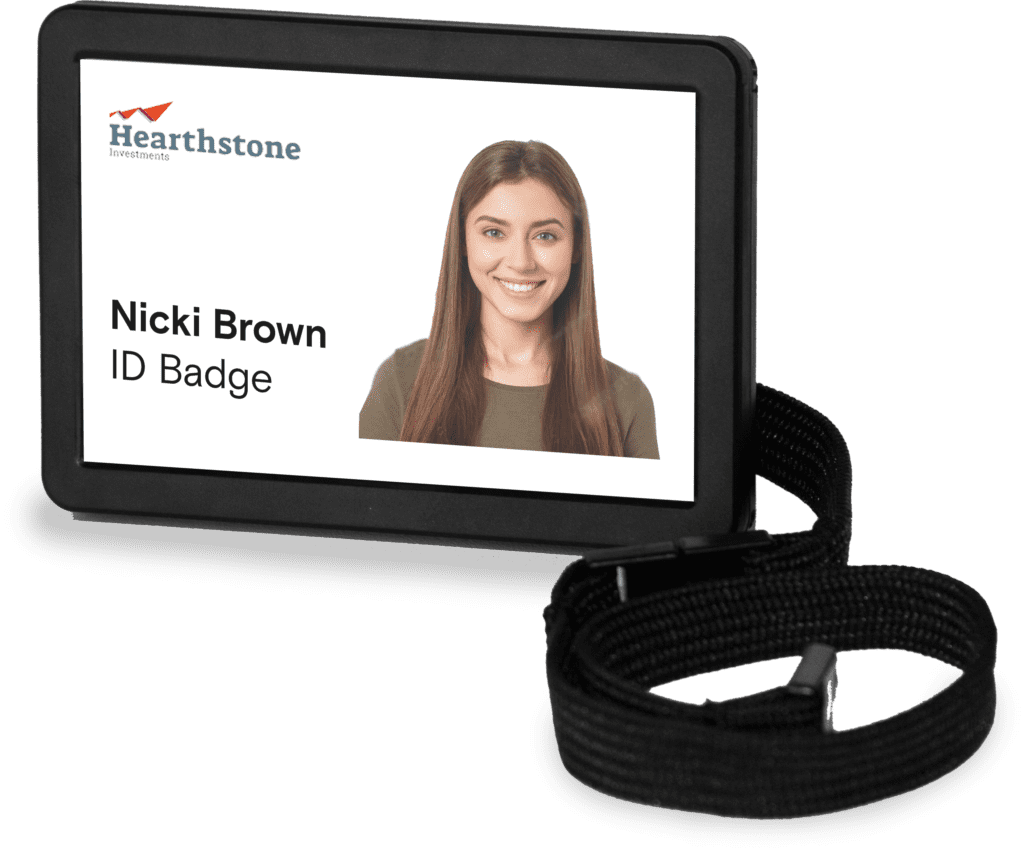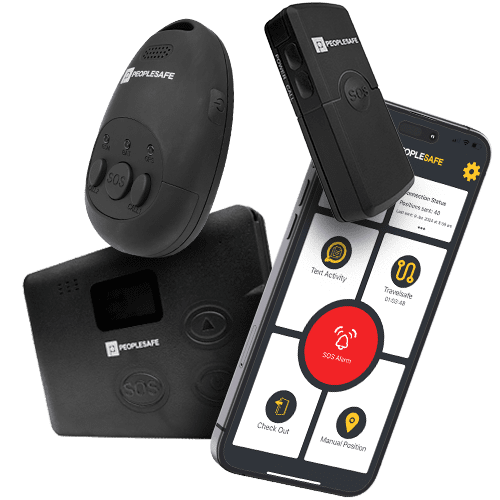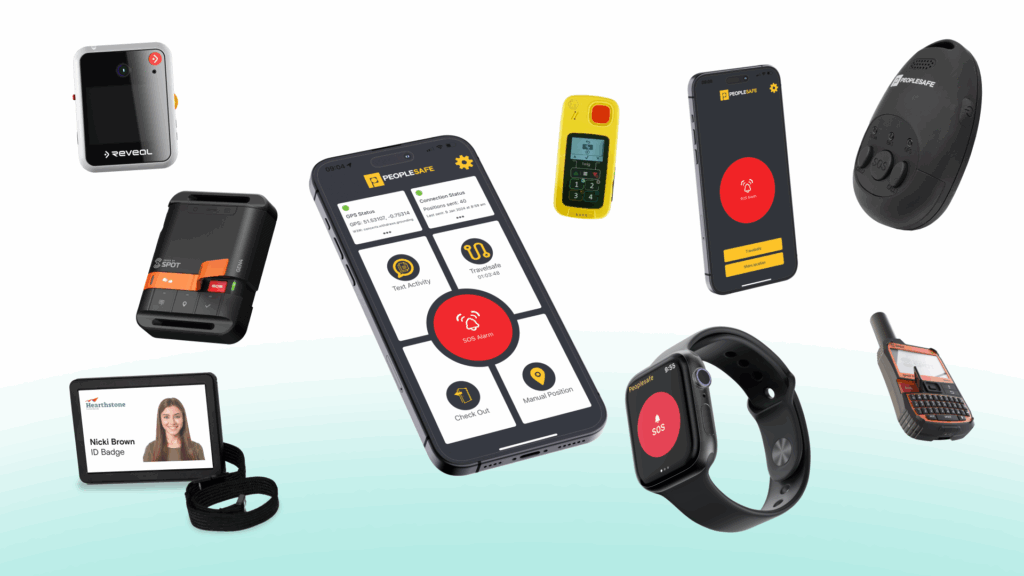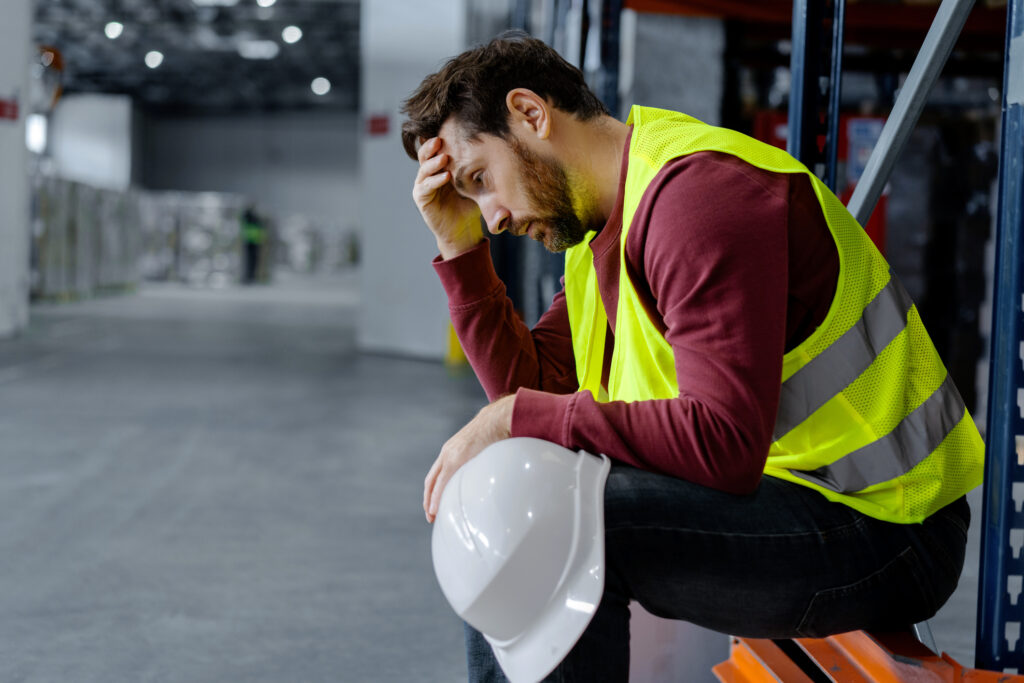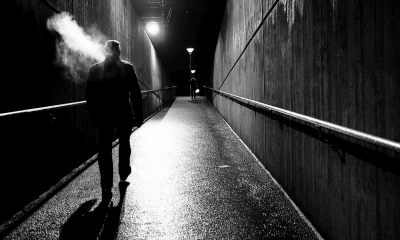What Is A ‘Fall Detection’ Alarm and Which Organisations Need One?
A fall alarm, or fall detection alarm, is a personal device that will automatically call for help when the user suffers a fall due to a slip, trip or other medical problem. A device or app equipped with the fall detection feature (also known as man down) will detect when the user falls over and will automatically activate an SOS alarm, meaning the user is not required to manually press a button and can get help even if they are unconscious.
Our core lone worker safety devices are all capable of detecting a slip, trip or fall and raising an alarm automatically.
The Health and Safety Executive consistently report that over 500,000 workers suffer a non-fatal injury every year, with the main causes being:
- Slips, trips or falls on the same level
- Handling, lifting or carrying
- Struck by a moving object
- Acts of violence
- Falls from height
Slips, trips and falls can lead to serious injuries such as broken bones or head injuries. Without immediate assistance, these can lead to more major consequences and can have a serious impact on a worker’s wellbeing. Especially for vulnerable workers or those who work alone for long periods of time without direct supervision. In fact, falls are the leading cause of injury-related death for adults aged 65 and older.
How Does Fall Detection Work?
Scenarios where a user falls unconscious due to a slip, trip or a medical condition are one of the major causes of concern for many lone workers. This is because they are unable to alert someone even if they have a communication device or just a general personal safety alarm, which would require the user’s manual input. In these instances, the user could be left without help for an extended period of time.
In such scenarios, the fall detection feature within Peoplesafe solutions will detect that fall and raise an alarm directly to the Controllers in our Alarm Receiving Centre (ARC). Our patented fall detection feature uses three factors that mimic a falling motion to raise an alarm and will raise an alarm once it detects all three of these events:
- A fall from a height,
- A period of non-movement and,
- A change in orientation.
When all three factors have been detected, the device or smartphone will vibrate to tell the user that an alarm is being raised. The Controllers in our Alarm Receiving Centre will know that it is a fall detection alarm and proceed accordingly.
The Controllers are fully trained to deal with different types of situations, so will attempt to communicate with the user by using the 2-way audio capability. If the Controller believes that the user needs immediate medical assistance, they will summon the emergency services directly to the user’s location using the device’s built-in GPS capability.
Additionally, to ensure accuracy and cater to individual preferences, the sensitivity of Peoplesafe’s fall detection feature can be adjusted to suit the needs of the user and ensure maximum accuracy. Users can also wear their device in a range of holsters to ensure it is easily accessible and is able to correctly identify a slip, trip or fall.
Who Should Use a Fall Detection Alarm?
Although fall detection alarms are often associated with older workers, employees of any age and in a range of sectors can benefit from a fall alarm. This includes:
- Lone workers – Lone workers are likely to have no immediate access to help in an emergency, so could be left unassisted in the event of a fall. For guidance on identifying lone workers, visit our infographic.
- Those at increased risk – Anyone who is predisposed to a risk of slips, trips or falls (e.g., someone with epilepsy) and works alone for any period of the day.
- Employees working at height – Employees who work at height, such as on scaffolding or up ladders, are at an increased risk of falling.
- Employees who work with moving machinery – If it is ride-on machinery (e.g., digger), the employee is at risk of falling off. Contact with moving machinery causes over 20 workplace fatalities every year.
- Workers in high-risk environments – Those working in environments where hazards such as uneven flooring, spills, trailing cables or poor lighting are present.
- Employees working on large sites – Those working on large sites may not be seen or heard in the event of an accident.
- Those working with live animals – Agriculture, forestry and fishing have the highest percentage rate of workplace injury.
- Employees working outside – For employees working outside, such as in farming or forestry, uneven terrains can significantly increase the risk of falls.
- Manual handlers – Employees who do manual handling as part of their role face an increased risk of injury, such as pulled muscles, slipped discs and broken bones, which can lead to a fall.
Who is at Increased Risk of Falling?
There are many different reasons that someone may be at increased risk of falling. These include:
- Muscle weakness – This could be due to a number of conditions, such as Parkinson’s disease, a stroke or diabetes.
- Anyone with poor vision – This can make it difficult to see obstacles, which can lead to slips, trips and falls.
- Those on specific medications – Some medications can cause dizziness, drowsiness, or make users more likely to pass out.
- Workers with medical conditions – People with medical conditions such as diabetes, high blood pressure or anaemia may be at increased risk of falling. Additionally, those with medical conditions prone to seizures are more likely to fall.
- Older employees – Older workers may be at more risk of falls due to a decline in muscle strength and balance.
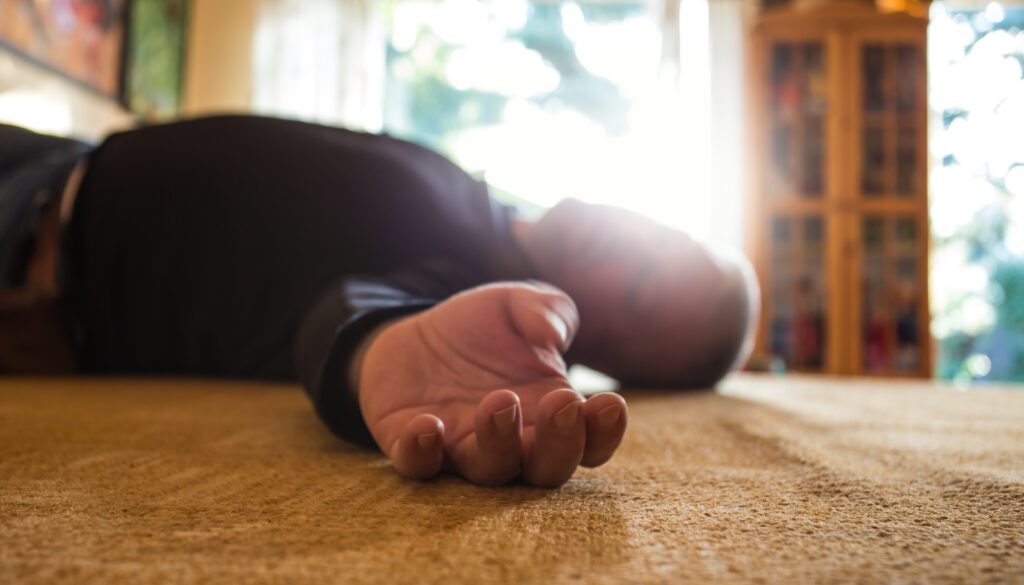
Which Organisations Need Fall Detection Alarms?
Fall detection alarms can benefit a wide range of organisations, enhancing the wellbeing of employees and reducing response time in emergency situations. Here are some industries where a fall detection alarm could be beneficial:
Construction and manufacturing – Workers operating in elevated areas, scaffolding, or on uneven surfaces are at an increased risk of slips, trips and falls. Fall detection alarms can mitigate the impact of accidents in these high-risk environments.
Transportation and delivery services – Employees working in transportation and delivery services are regularly getting in and out of vehicles, where slips can occur. Additionally, they may need to load and unload goods, putting them at risk of further injury from falling without direct access to help.
Emergency services – Paramedics, police officers and other first responders work in unpredictable situations where the risk of slips, trips and falls is elevated. Responding to the public also means they are at increased risk of violence and abuse, so a fall detection alarm can provide peace of mind.
Retail and hospitality – Individuals working alone in retail or hospitality settings, especially during non-business hours, can benefit from fall detection alarms. These roles may involve lifting or moving stock, using ladders to access high shelves and using trolleys or machinery for stock handling, all of which increase the risk to safety.
Cleaners – Over 3,000 serious accidents involving cleaners are reported to the HSE each year, with slips trips and falls being one of the biggest causes. This is because they face hazards such as wet surfaces, handling cleaning equipment, and working in potentially hazardous environments.
Outdoor Workers – Employees working outdoors often face uneven terrains, slippery surfaces and trip hazards. Having a fall detection alarm in these circumstances, particularly in remote areas, can be vital in getting help.
Manufacturing and Warehousing – Those working with heavy machinery or handling materials in manufacturing and warehousing may be at risk of falls or serious injury that leaves employees unable to call for help manually.
Implementing Fall Detection Technology
To effectively implement fall detection technology it needs to become embedded into your organisation’s culture. This should begin by introducing the technology to employees while clearly communicating the purpose and benefits. Emphasise that it’s a proactive measure aimed at ensuring their safety and wellbeing and addressing any concerns to get employee buy-in.
You should then introduce training sessions to walk employees through the steps of wearing, activating, and testing the device or app. Explain its role in emergency response, using real-life scenarios to demonstrate its effectiveness and make it relatable for employees. You should also encourage an open dialogue where employees can ask questions and seek clarification if necessary.
To encourage usage, you could implement incentive programmes that reward engagement and share success stories of where fall detection has been beneficial. This will allow employees to see the real-life benefits fall detection technology can have in ensuring their safety.
Morrisons Case Study
In 2023, Morrisons were fined £3.5 million for failing to ensure the safety of and neglecting their responsibilities towards a vulnerable employee.
On 25 September 2014, Matthew Gunn, 27, had been going upstairs to his work locker at the supermarket’s Tewkesbury store. Here, it is believed he had a seizure on the stairs, and fell, causing fatal head injuries.
The court findings revealed that Morrisons was aware of Matthew’s epileptic condition, yet they missed several opportunities to implement measures that could have prevented this tragic incident, for example providing him with a locker downstairs and giving him discounted rates at the public cafeteria instead of using the staff canteen located upstairs. It was also found that Morrisons failed to conduct a proper risk assessment that considered the potential risks faced by an employee with epilepsy.
This large fine serves as a clear message to all employers about the importance of complying with health and safety duties and taking necessary precautions.
Peter Tonge, Tewkesbury Borough Council’s Head of Community Services, commented: “We hope this court outcome will send a message to all employers of the importance of complying with basic health and safety duties, and properly assessing risks, especially when it comes to vulnerable employees.”
What Are the Benefits of a Fall Detection Alarm?
Although there are legal measures that can and should be implemented to minimise the risk of falls, accidents can still happen due to human error. Considering this, the implementation of a fall alarm system becomes crucial, ensuring that no individual is left unattended in the event of an accident. This not only enables businesses to fulfil their duty of care more effectively but also provides employees with reassurance and peace of mind that if they were to unexpectedly fall while alone, help would be readily available.
Having a fall detection alarm that is supported by an ARC means that there is lone worker support 24/7/365. Providing immediate assistance in the event of a serious accident or a medical emergency is vitally important, as every minute that passes without aid could be lethal. Implementing a service with fall detection capabilities can have a significant impact on long-term outcomes and the quality of life of the user in an emergency.
For more information on fall detection, download our infographic.
If you would like a demonstration of our fall detection feature or find out more about our range of devices with fall detection capabilities, then please contact our sales team at 0800 990 3563 or email sales@peoplesafe.co.uk
